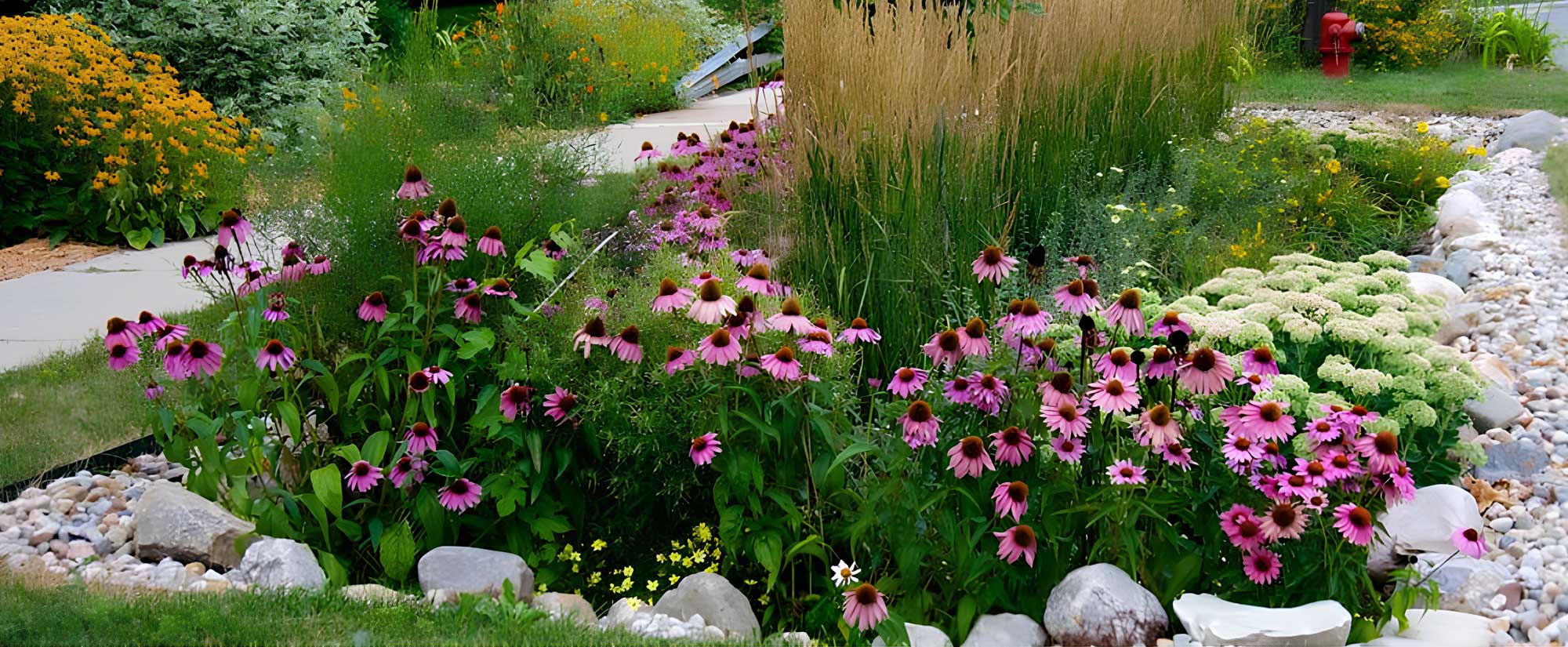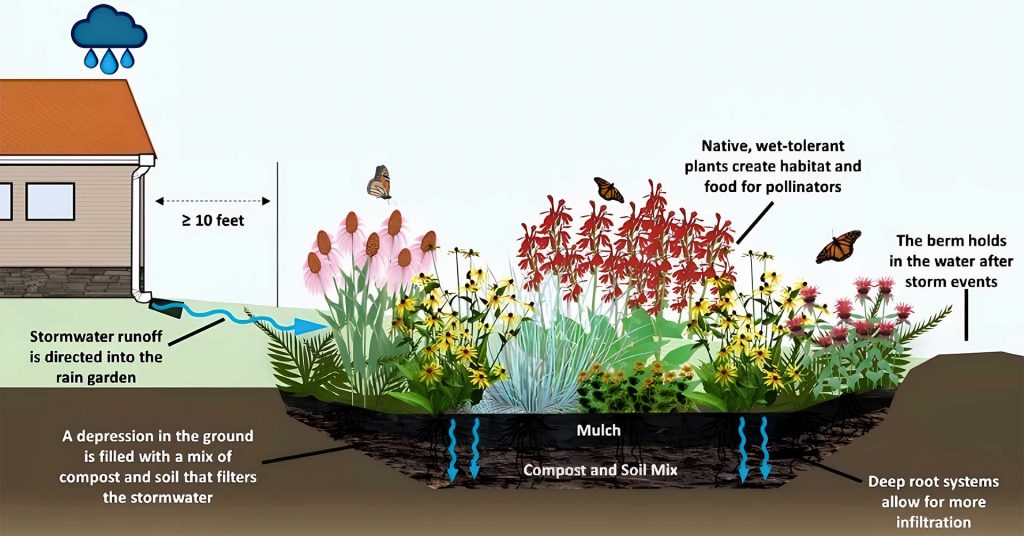
Notes from a Texas Master Naturalist about native plants and why they matter to wildlife.
Everyone has a spot where puddles fill when there’s even a moderate rainfall. Of course, it’s usually in the back yard where the kids splash and the dog digs so the scene becomes a mud pit to track up the patio and back door with the slimy mess.
Why not turn that negative into a beautiful positive? Make it just a little deeper, surround it with a slight berm with the soil you remove, then fill it with water loving plants and a tree on the edge for some shade. Before the rainy season is over, you’ll see it filling out into a spotlight location. As an added benefit, birds and butterflies will want to visit for a drink.
It does take some planning, and you will want to make sure to include some rocks around at least the higher side(s) of the low garden area to slow the flow of rainwater runoff, and a bit higher berm on the opposite side to retain the water in the garden. Adding some base material before putting your garden soil into the lowest part of the garden will help hold a bit more water for the plants that truly love “wet feet.”
Another “must have” is including plants that easily transition between wet and dry, so you have a great garden even in dry times. Your Native Texas Landscape consultant can help you choose and locate the right mix for seasonal blooms and interesting layering of plants, small to tall. A tree species that can handle periods of wet soil adds even more interest to the garden.
Be prepared for some maintenance until all the plantings get established, but after that, you will find your rain garden pretty much takes care of itself with just seasonal grooming and pruning to maintain the layering. A rain garden can be the perfect solution for a problem low spot in any landscape!

Teri MacArthur has been a certified Texas Master Naturalist since 2001, and is an environmental educator offering a broad scope of adult and youth nature programs in the region.


